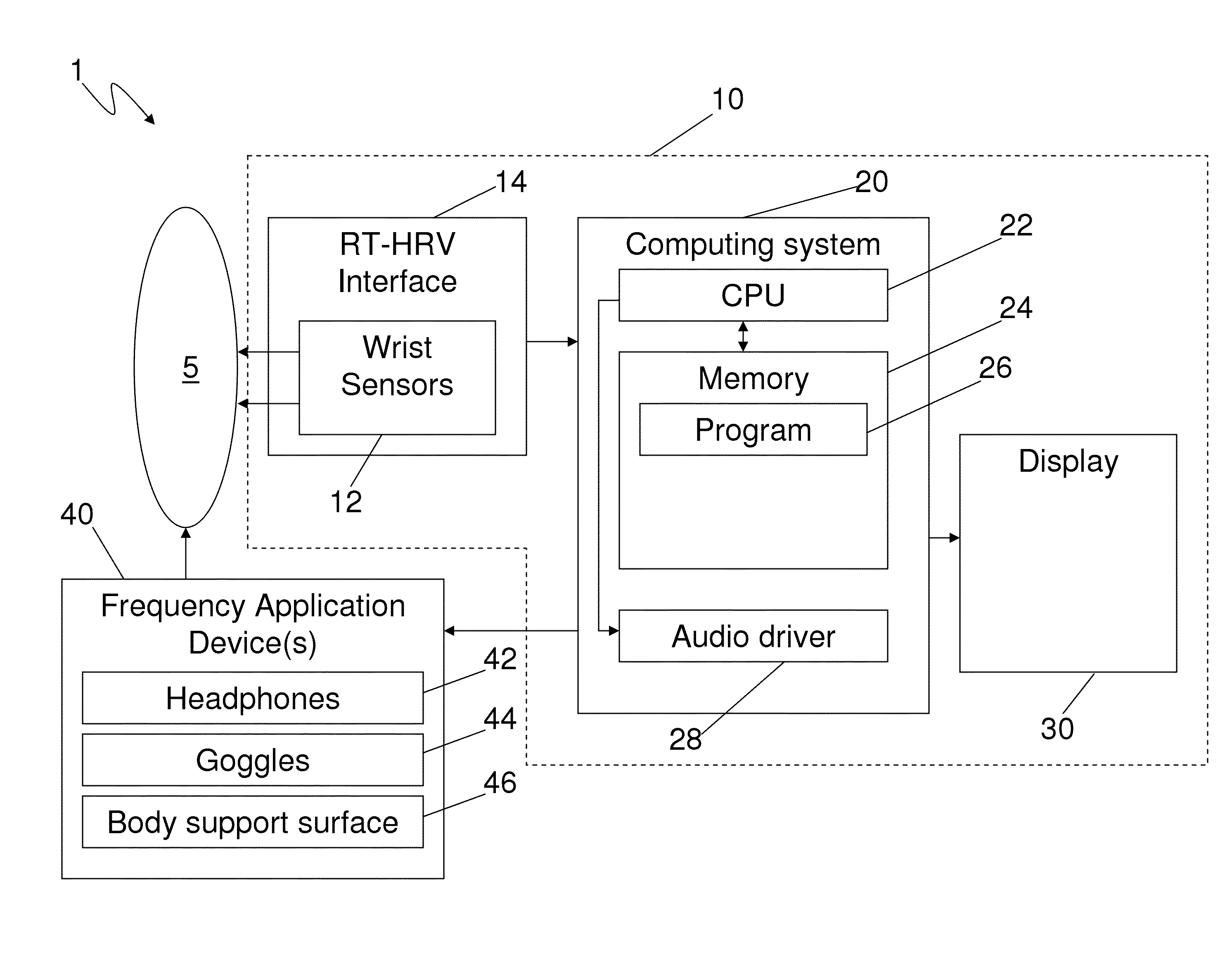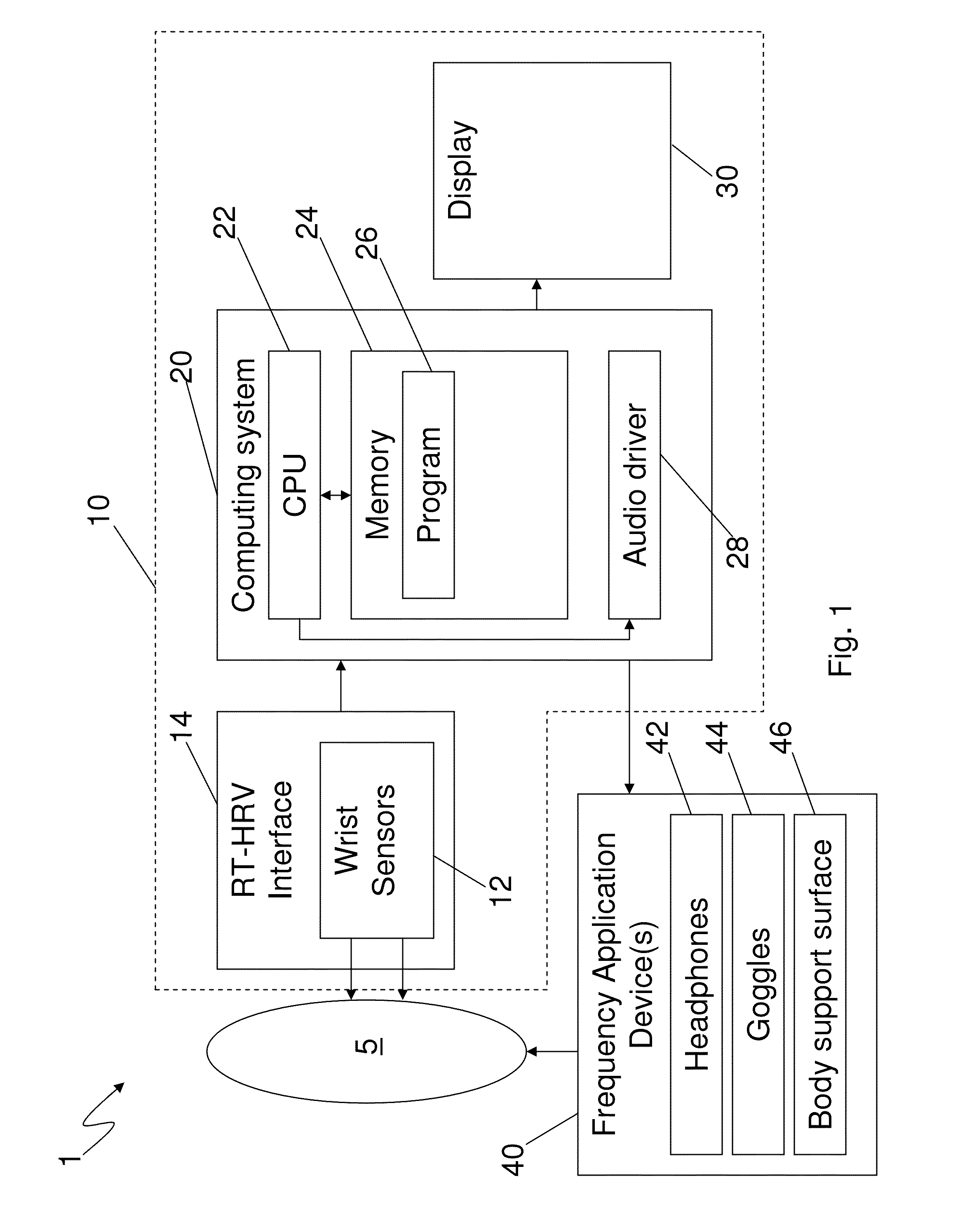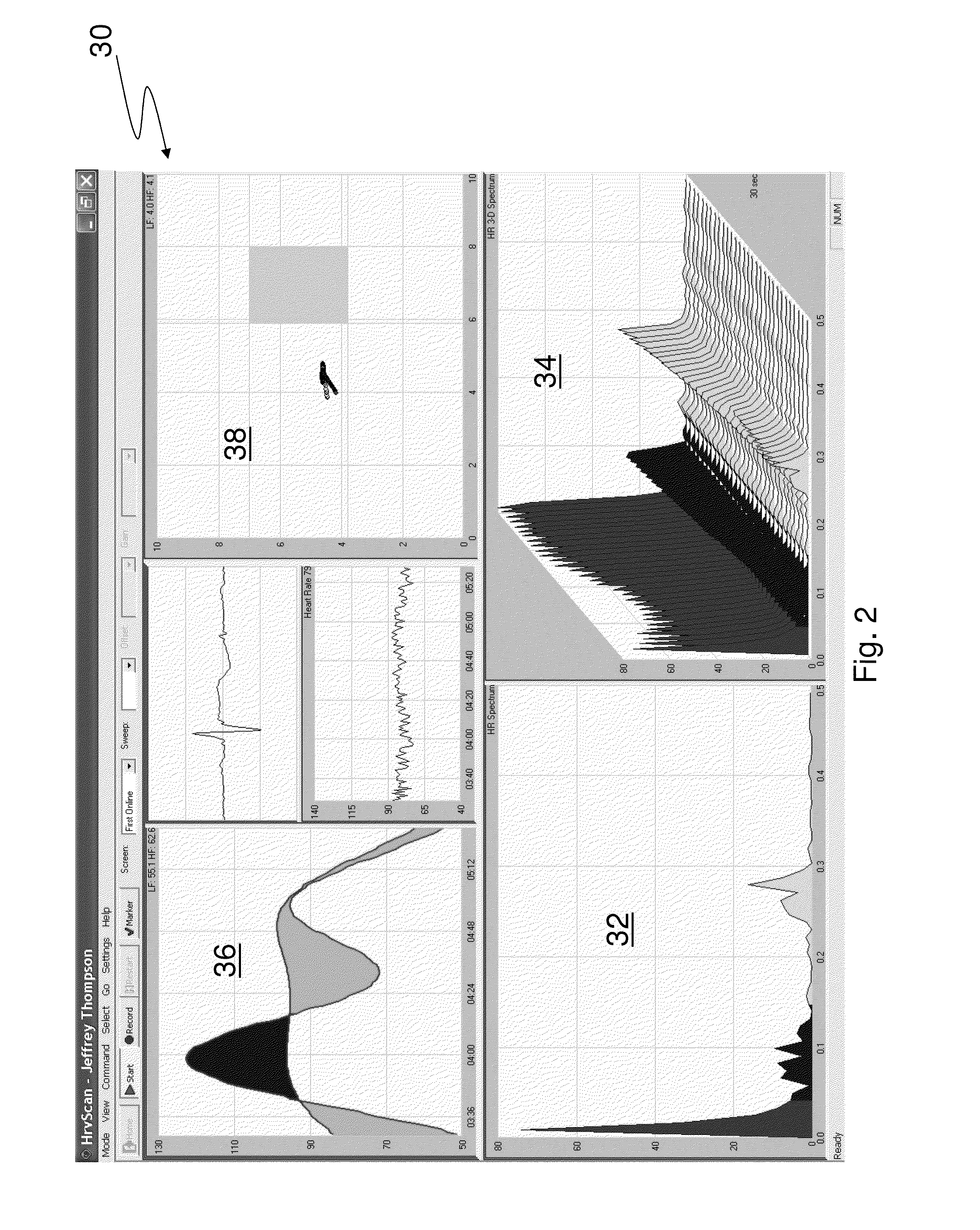Methodology, use and benefits of neuroacoustic frequencies for assessing and improving the health and well-being of living organisms
a technology of neuroacoustic frequency and living organism, which is applied in the field of methodology, use and benefits of neuroacoustic frequency for assessing and improving the health and wellbeing of living organisms, can solve the problems of noisy neighbors, unpleasant stimuli that challenge the nervous system, and are seen as relatively unavoidabl
- Summary
- Abstract
- Description
- Claims
- Application Information
AI Technical Summary
Benefits of technology
Problems solved by technology
Method used
Image
Examples
Embodiment Construction
[0020]A method and related system for accurately and objectively determining when a subject is in homeostasis and for placing the subject into homeostasis are generally described herein. Related treatment methods are also disclosed.
[0021]By way of example with a preferred embodiment, the components of the ANS of a subject, and the state of homeostasis thereby, can be detected with a particular type of cardiac monitor, called a Real-Time Heart Rate Variability (RT-HRV) monitor. RT-HRV monitors are well known in the medical arena, and any suitable device may be employed. It will be appreciated that other devices or monitors, however, may also be suitably employed that are capable of obtaining SNS and PSNS data in real-time to advance the embodiment methods as described in the following, such as EEG devices or the like. It will be further appreciated that such real-time data collection devices may require an initial data-gathering period before they begin outputting SNS and PSNS data, ...
PUM
 Login to View More
Login to View More Abstract
Description
Claims
Application Information
 Login to View More
Login to View More - R&D
- Intellectual Property
- Life Sciences
- Materials
- Tech Scout
- Unparalleled Data Quality
- Higher Quality Content
- 60% Fewer Hallucinations
Browse by: Latest US Patents, China's latest patents, Technical Efficacy Thesaurus, Application Domain, Technology Topic, Popular Technical Reports.
© 2025 PatSnap. All rights reserved.Legal|Privacy policy|Modern Slavery Act Transparency Statement|Sitemap|About US| Contact US: help@patsnap.com



